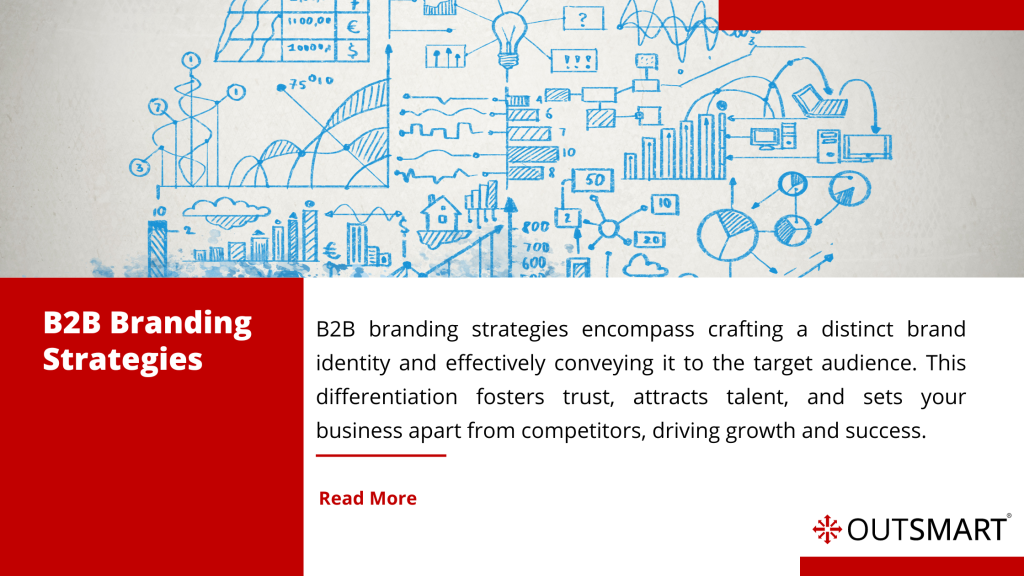Download your unique e-book for manufacturers today!
And unlock guide on how to optimally structure your marketing department to increase ROI and reduce cost per acquisition.
Top rated by Manufacturers
5/5
B2B branding is the process of creating a unique identity for your business and communicating it to your target audience. It is important because it helps to differentiate you from your competitors, build trust with potential customers, and attract top talent.

There are a few key differences between B2B and B2C branding:
Read more about how OUTSMART developed a brand for chemical manufacturers.
Read more about how OUTSMART developed brand and sales assets for an aerospace client
B2B branding is essential for any company that wants to succeed in the competitive marketplace. By following the tips outlined above, you can create a strong brand that will help you to attract new customers, build relationships with key stakeholders, and grow your business.
Subscribe to Smart Ideas
Get insights on industry trends, receive valuable resources, and other materials directly to your email inbox.
Copyright © 2025 OUTSMART
Our Services
Industries
Top rated by Manufacturers
Burjor brings over thirty years of Architectural, Engineering, and construction (AEC) Industry leadership experience. He helps AEC firms scale by building internal processes that drive efficiency and growth. An alumnus of 11M Bangalore, Burjor sg€alises in business strategy, branding, client engagement. and organizational development.
He held senior roles at Venkataramanan Assc&tes and Synefra Infrastructure Limited (Suzlon Group), driving business growth and strategic initiatives. He heads a firm that delivers Revit-based architectural solutions across Overseas sectors for clients in the US, Middle East, and India.
Burjods blend of corporate and entrepreneurial experience equips him with unique insights into AEC innovation and excellence.
Seshasai brings 22 years of IT leadership to drive product strategy and development. An IIT Madras alumnus, he has led the creation Of mission-critical software, including CRM and enterprise mobile platforms, and manages multidisciplinary teams, delivering successful client outcomes.
A former VP at SAP, Sai spearheaded a business rules acquisition and contributed to the HR implementation of SAP SuccessFactors at Myntra. He is a co-author of the book “Developing Mobile Applications Using SAP NetWeaver Mobile” and holds two patent filings- His commitment to detail and process excellence powers delivery efficiency.
With over 40 years of leadership experience, Cherian specialises in mentoring businesses and leaders to achieve growth, He helps family businesses, SME-S, and corporate executives scale through strategic mentoring and Cherian’s career spans CXO roles at Xerox, Bharti Airtel, and Reliance Communications, where he led large-scale operations and high-impact projects.
An accomplished writer, he has delivered workshops on leadership, branding, and wellness while authoring 80+ articles on business and growth strategies.
Lalitha Ravi brings over three decades of global experience driving business growth across corporates and SMEs in India, the Middle East, Europe, the US, and Australia. As the CEO of OutSmart Services, a leading B2B marketing agency, she combines her cross-functional expertise with deep marketing insights to deliver solutions tailored to each business’s growth stage.
Recognised as a LinkedIn Top Voice in B2B Marketing Strategy, Lalitha is an honorary national committee member promoting women’s entrepreneurship and a pivotal contributor to the WICCI Startup Council Karnataka. Her accolades include the prestigious Karnataka Woman Leader award by CMO Asia.
Lalitha is an alumna of IIM Bangalore and a certified Digital Transformation professional
And unlock guide on how to optimally structure your marketing department to increase ROI and reduce cost per acquisition.
Top rated by Manufacturers